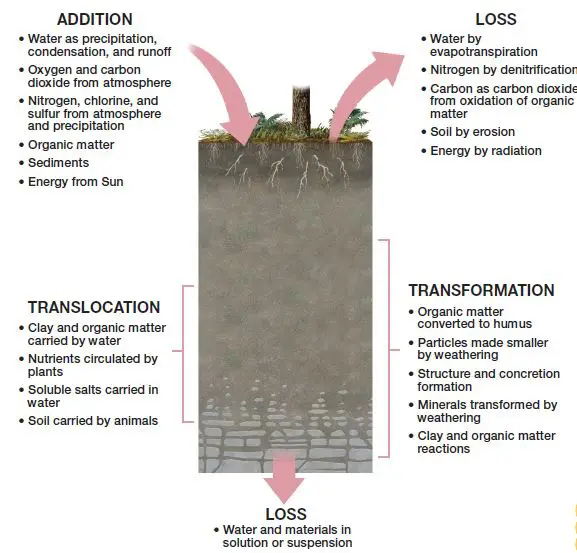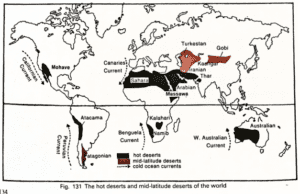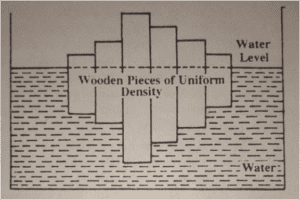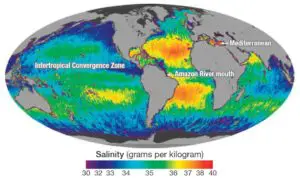Soil Profile | Diagram, Horizons and Layers | UPSC – IAS
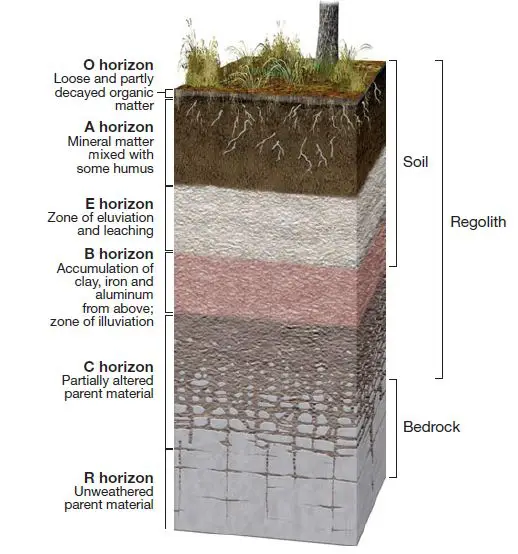 Image – Idealized soil profile. The true soil, or solum, consists of the O, A, E, and B horizons.
Image – Idealized soil profile. The true soil, or solum, consists of the O, A, E, and B horizons.
The vertical variation of soil properties is not random but rather an ordered layering with depth. Soil tends to have more or less distinctly recognizable layers, called horizons, each with different characteristics. The horizons are positioned approximately parallel with the land surface, one above the other, normally, but not always, separated by a transition zone rather than a sharp line.
- A vertical cross section (as might be seen in a road cut or the side of a trench dug in a field) from the Earth’s surface down through the soil layers and into the parent material is referred to as a soil profile. The almost infinite variety of soils in the world are usually grouped and classified on the basis of differences exhibited in their profiles.
Soil Horizons Explanation | UPSC – IAS
- The O horizon is sometimes the surface layer, and in it organic matter, both fresh and decaying, makes up most of the volume. This horizon results essentially from litter derived from dead plants and animals. It is common in forests and generally absent in grasslands. It is actually more typical for soils not to possess an O horizon; the surface horizon of most soils is the A horizon.
- The A horizon, colloquially referred to as topsoil, is a mineral horizon that also contains considerable organic matter. It is formed either at the surface or immediately below an O horizon. A horizons generally contain enough partially decomposed organic matter to give the soil a darker color than underlying horizons. They are also normally coarser in texture, having lost some of the finer materials by erosion and eluviation. Seeds germinate mostly in the A horizon.
- The E horizon is normally lighter in color than either the overlying A or the underlying B horizon. It is essentially an eluvial layer from which clay, iron, and aluminum have been removed, leaving a concentration of abrasion-resistant sand or silt particles.
- The B horizon, usually called subsoil, is a mineral horizon of illuviation where most of the materials removed from above have been deposited. A collecting zone for clay, iron, and aluminum, this horizon is usually of heavier texture, greater density, and relatively greater clay content than the A horizon.
- The C horizon is unconsolidated parent material (regolith) beyond the reach of plant roots and most soil-forming processes except weathering. It is lacking in organic matter.
- The R horizon is bedrock, with little evidence of weathering. True soil, which is called solum, only extends down through the B horizon.
Soil-forming Processes | UPSC – IAS
Image Explanation -Image Explanation – four soil-forming processes: addition, loss, translocation, transformation. Geologic, climatic, topographic, biological, and chronological (time) soil-forming factors influence the rate at which these four processes occur and therefore the rate at which soil is formed.
The development of any soil is expressed in two dimensions: Depth and time. There is no straight-line relationship between depth and age, however; some soils deepen and develop much more rapidly than others. Four processes deepen and age soils:
- Addition (ingredients added to the soil),
- Loss (ingredients lost from the soil),
- Translocation (ingredients moved within the soil), and
- Transformation (ingredients altered within the soil).
The five soil-forming factors discussed earlier – Read it from Here – Soil forming factors Which are responsible for soil development.
- Geologic,
- Climatic,
- Topographic,
- Biological, and
- Time –
These factors influence the rate of these four processes, the result being the development of various soil horizons and the soil profile.
